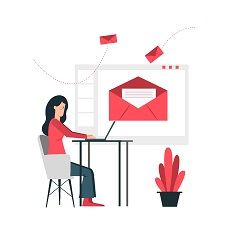

If you’re emailing a coworker (particularly from a company email address), the company you work for is a given and you can leave it off, but if you haven’t interacted with the person before, your position might be helpful to include. If you’re emailing someone outside of the organization you work for, including both tells the recipient what you do and where you work. Title and company: You might include one or both of these as part of your email ending, depending on who you’re contacting and why.But for allies: Keep in mind that when you share your pronouns, you help create a safe environment and normalize the act in general so that trans and nonbinary people don’t feel conspicuous as the only ones doing it. Pronouns: This is at your discretion and dependent on your comfort level-especially if you identify as LGBTQ.For conversations with people you already know, your first name is usually enough. Name: If this is the first email you’re sending someone, you should generally go with your full name (first and last or whatever you commonly go by) or your first name followed by a default email signature that has your full name in it.

Think “Sincerely,” “Best,” “Thanks,” or something like “Have a great weekend!” Unless you’re more than a few emails into an email thread (especially over a short period of time) or you’re very close with the recipient, you need a professional closing for your email.

EMAIL ENDINGS HOW TO
Read on to see how to end your emails the right way-plus a list of professional closings for any situation. When you’re sending a professional email-for work or school, in your job search, or in a personal situation where you’re dealing with a business-the ending of your message “can leave a lingering favorable impression give a satisfying sense of completion,” says Muse career coach Barb Girson.

Then, sign up for our newsletter and we’ll deliver advice on landing the job right to you. SEARCH OPEN JOBS ON THE MUSE! See who’s hiring here, and you can even filter your search by benefits, company size, remote opportunities, and more. But when you want to make sure an email makes a good impression, taking an extra beat to consider how you’re ending your note could help it land the way you want it to. Do you have that professional email mostly written, but you’re not quite sure how to wrap it up? Or do you feel like you’re defaulting to the same email closings every time and want some alternatives? Sure, if you’re emailing someone you talk to everyday, it’s not necessarily the end of the world to skip the sign-off and end with just your name.


 0 kommentar(er)
0 kommentar(er)
